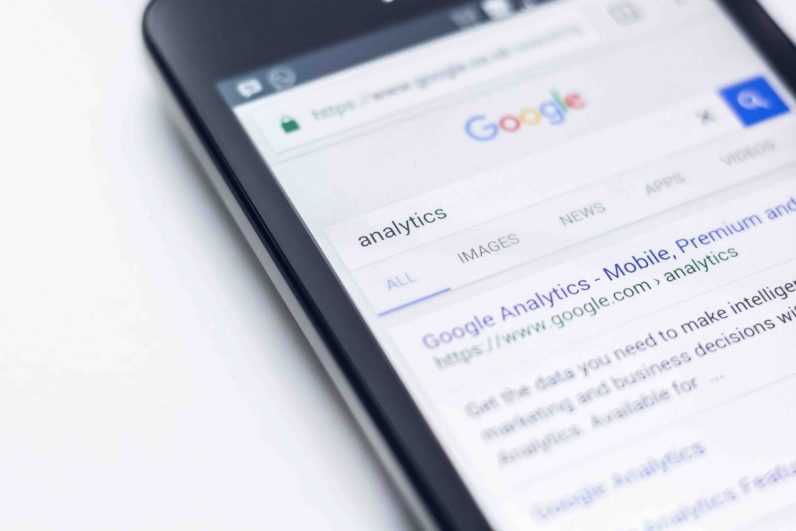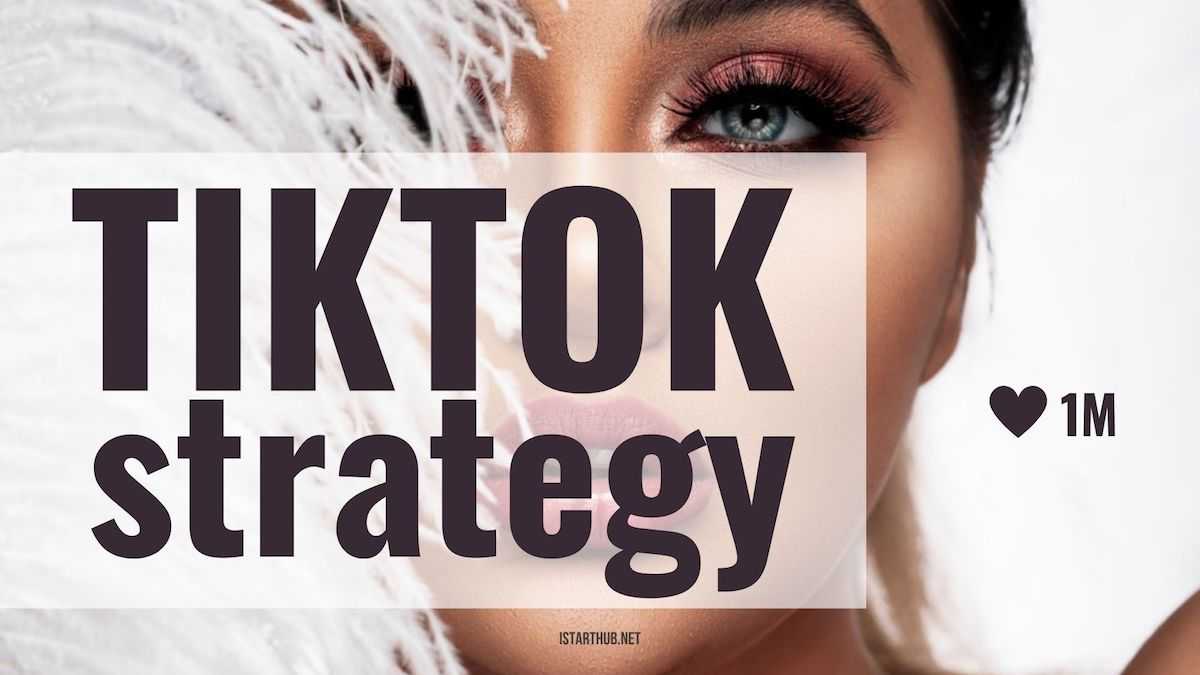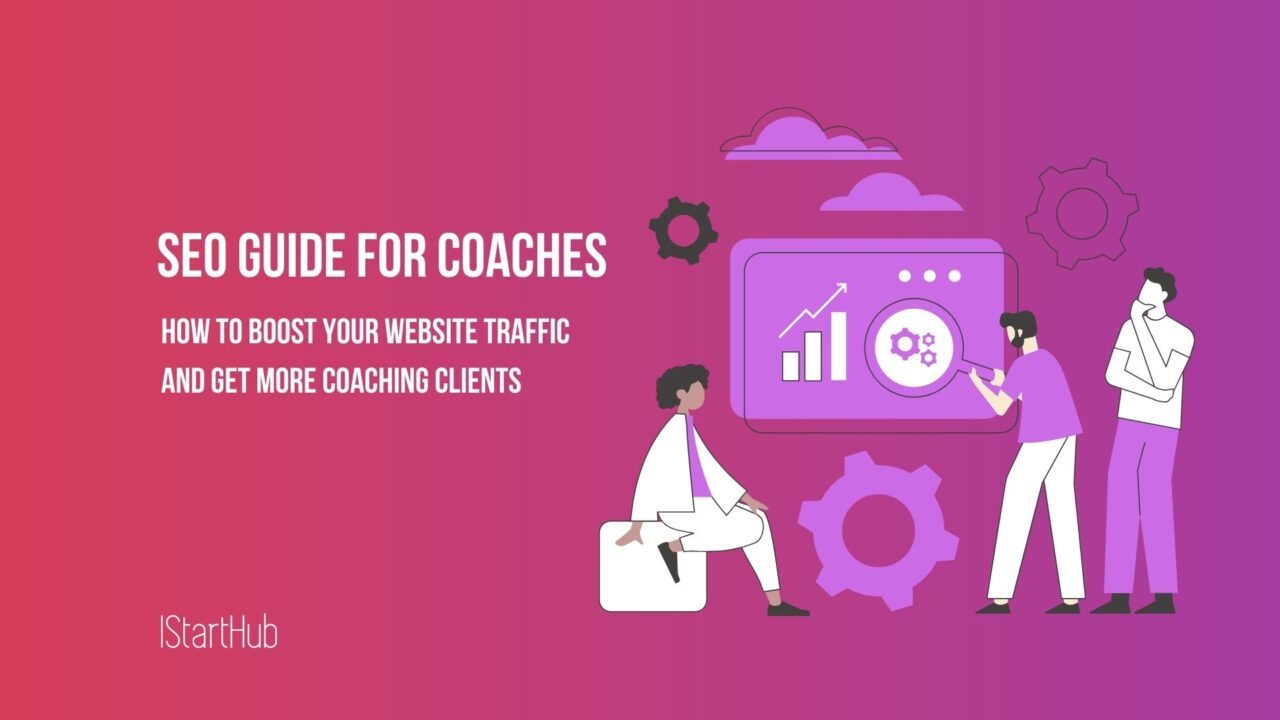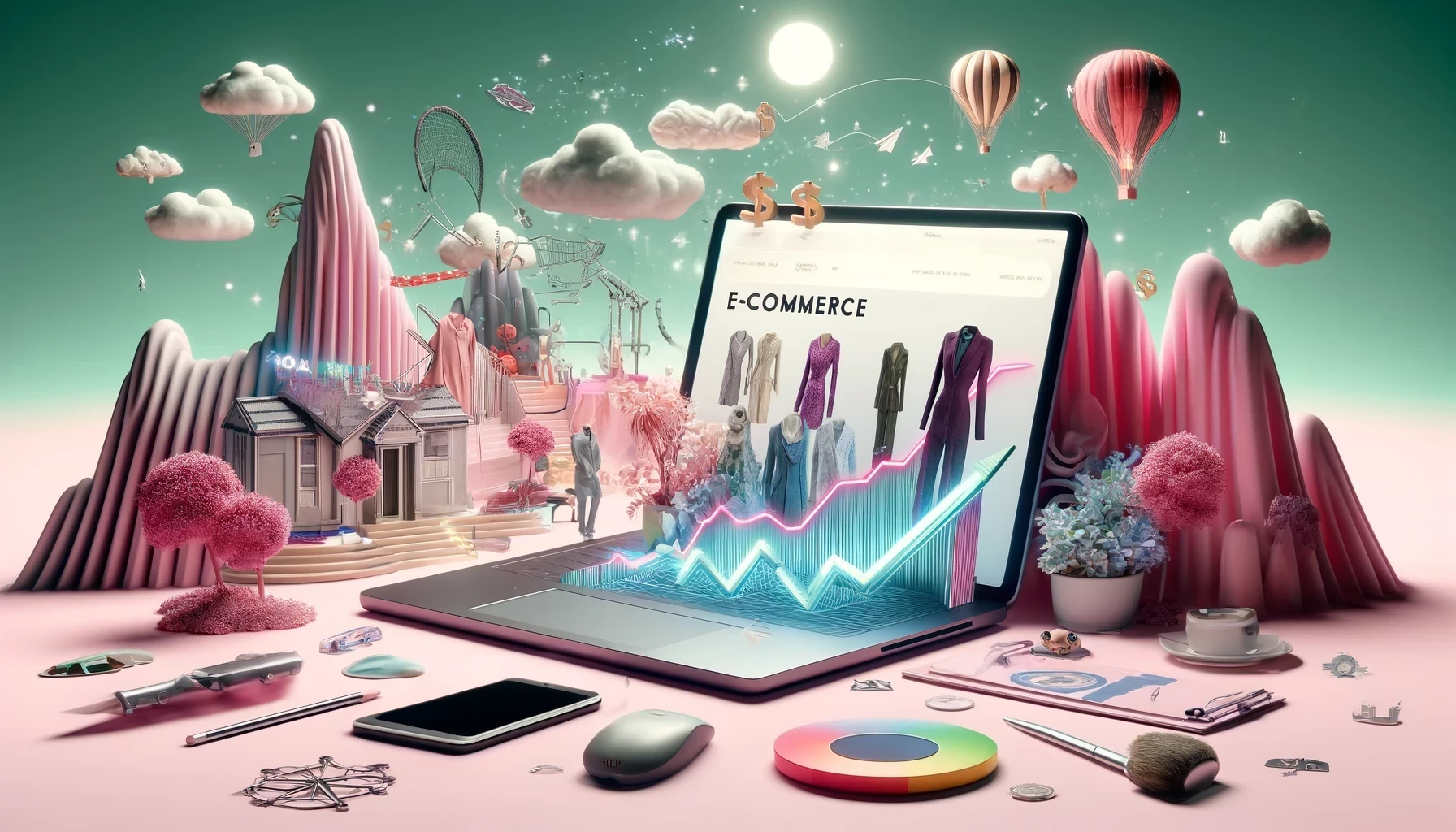We can all agree that Facebook is the world’s king of social media, being the most used social media platform with close to 3 billion monthly active users. However, to grow your business on Facebook, you must understand how the Facebook algorithm works.
With such a high number of active users, you can imagine the impact on organic-based traffic. If you’re like most marketers, you’ve probably noticed a decline in organic traffic on Facebook.
That’s because the giant social media platform prefers user base and advertising to organic reach. In fact, Facebook has openly admitted that “organic reach is falling short” and urges advertisers to buy ads.
That means, as a small business on a tight budget, it’s going to be more difficult to expand your organic reach, even with a massive organic following on Facebook. In other words, it will be tougher to get your content to those fans you labored and sweated to create.
But there’s hope. It all has to do with the Facebook algorithm. In this post, we cover strategies on how to reset Facebook algorithm and ensure meaningful interactions with your audience.
Facebook Stats To Know In 2024
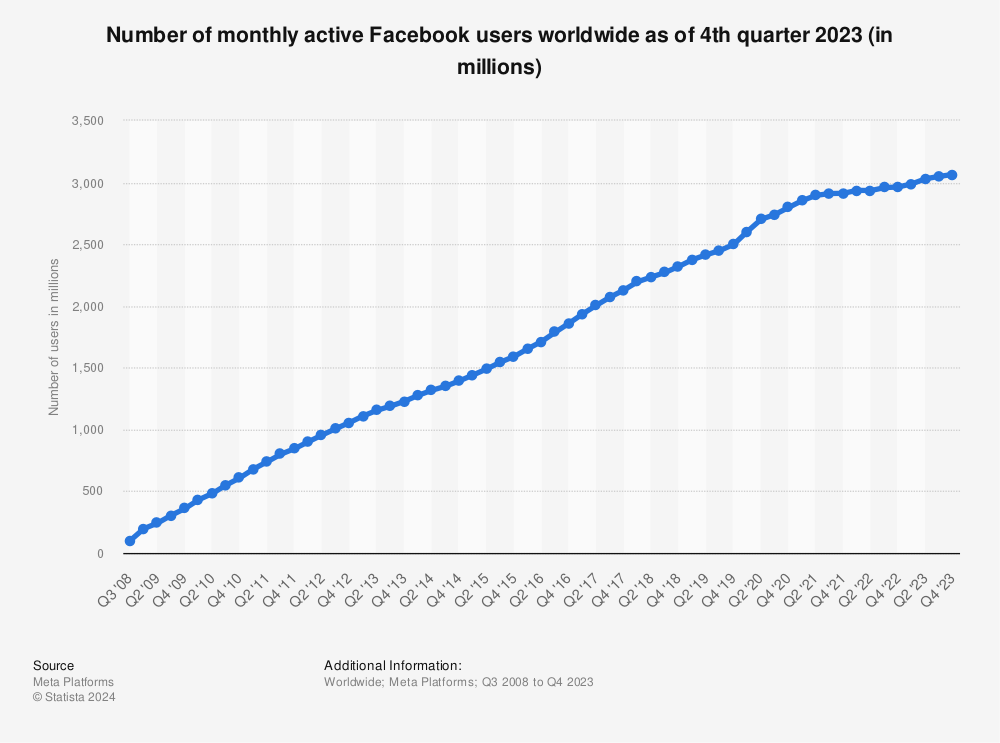
image source: Statista
Here are recent Facebook stats to keep in mind:
- The daily active users on Facebook as of December 2023, were 2.11 billion. (Meta)
- The monthly active users on Facebook as of December 2023, were 3.07 billion
- Facebook is the leading social media platform, making up 59% of social media users. (eMarketer)
- Facebook earned $60,645 billion in revenue in 2023 (Meta)
- Over 200 million small businesses around the globe use Facebook. (Meta)
- 58% of Facebook users are young adults under the age of 35. (DataReportal)
- In 2023, Facebook celebrated its 18th year of existence.
- The average time per month a typical user spends on Facebook is 19.7 hours and 21 minutes a day on average. (DataReportal)
- In the US, 86% of marketers use Facebook for advertising. (eMarketer)
- Peak Facebook traffic occurs on Wednesdays and Thursdays at midday.
- Ad impressions increased by 21% year-over-year in the fourth quarter of 2023 and by 28% for the full year (Meta)
- The average price per ad rose by 2% in the fourth quarter of 2023, while decreasing by 9% year-over-year for the full year (Meta)
Many of us try to guess how the Facebook algorithm actually works to bypass it and get higher rankings in the feed. However, the truth is that the machine learning ranking system is very complex and consists of many layers.
How does Facebook decide which posts to show?
The algorithm for Facebook is modified to meet the expectations of both users and advertisers. The main goal of Mark Zuckerberg’s “Fix” Facebook mission is to provide more engaging and higher quality content to the users.
As Mark Zuckerberg said, “Our goal is to reach a point where the ads are as relevant and timely as the content your friends share with you.”
But what are the Facebook algorithm changes? Let’s dive into the details step by step.
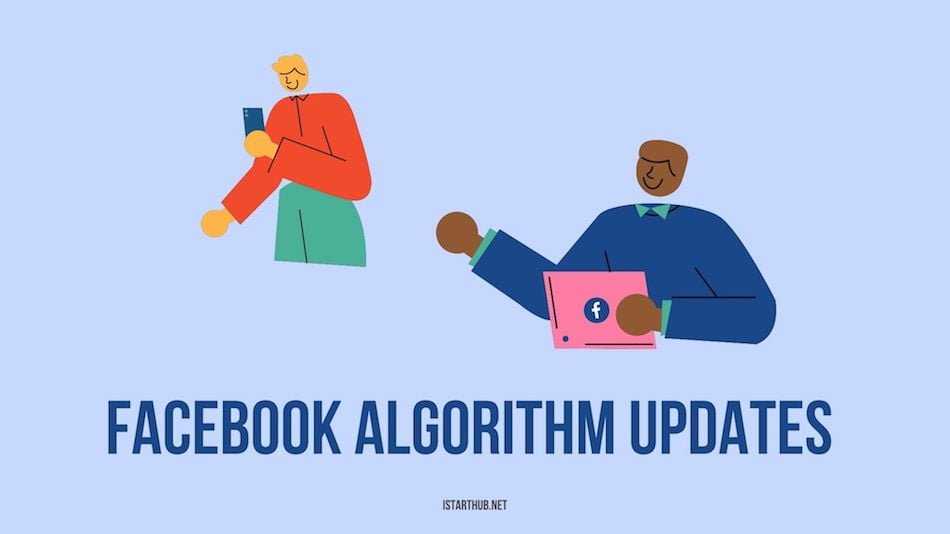
What is the Facebook algorithm?
The Facebook algorithm is a complex machine-learning system that decides what posts you see in your Feed. Essentially, it determines which content is more relevant to show to a user based on various factors. No wonder your Feed looks different from your friends because it’s personalized for each individual user.
In recent years, advertisers and marketers have seen various changes in the Facebook algorithm that hurt their ad performance and organic reach. The changes, which aim at prioritizing specific types of content that are more relevant and useful to users, aren’t favorable to businesses hoping to grow by targeting new and existing audiences.
While the Facebook algorithm isn’t the only factor affecting your content’s reach, it tops the list of the most important. That’s why it’s wise to stay updated with changes and updates affecting Facebook marketing.
Facebook Algorithm Explained
If you can recall, there was a time when posts that got the most likes were prioritized on your Feed. That algorithm just got a lot more complicated and now employs four factors to determine which post is more relevant to you:
- Inventory: This is all the content available on Facebook that could show up on your Feed. It includes posts from people you’re friends with as well as content from the Pages you follow, along with the groups you’ve joined.
- Signals: These are ranking indicators that help Facebook assess the relevance of each piece of content. That is, signals instruct Facebook on what content to prioritize on the user’s Feed. There are thousands of signals such as:
- Who posted the piece of content, and how often did you interact with them?
- When the post was published, and what time it is for you
- The type of content and how you’ve interacted with similar posts
- Quality and original videos
- Predictions: Facebook then uses the signals above to predict what you want to see. These predictions are based on past behaviors to try to understand how likely you are to engage with a piece of content.
- Score (Relevance scoring): The algorithm will then score each content based on relevancy. The higher the quality score, the higher the chance it will show up in your Facebook Feed.
How does the Facebook algorithm work? So, let’s decide how the Facebook changes algorithm works today which brings so many discussions around.
Facebook Algorithm Updates and Milestones Timeline
The Facebook algorithm has come a long way, and it continues to evolve and grow. Here are some of the important milestones and updates:
- 2009 – Facebook removed the chronological order of the news feed and started pushing for Likes. Posts with the most likes became popular.
- 2013 – Facebook introduced “Story bumping”, where stories that users previously missed were bumped to the top of the page the next time the user logged in.
- 2015 – The “See First” feature is introduced. Users can customize the content they want to see first.
- 2016 – Connections-first algorithm takes effect. Facebook pushed to start prioritizing posts from friends and family over those from publishers and brands. The same year also saw more weight given to emoji reactions.
- 2017 – The era of the video begins, with an emphasis on quality videos that people watch past the halfway mark.
- 2019 – Facebook started making feeds more personal. The “Why am I seeing this post” feature comes into effect to help users see why they fit the target audience for a specific Facebook ad. The platform continues to push other updates to improve personalized experiences like surveys and focus on video originality and quality.
- 2021 – Facebook introduces Reels and launches the “Favorites” tool, giving users more control over what they see.
- 2022 – It focuses on users’ privacy and the growth of online shopping.
Facebook algorithm 2024
In 2024, Facebook has implemented significant adjustments to its Reels algorithm, reflecting the platform’s growing emphasis on short-form video content. Understanding these changes is essential for maximizing engagement and visibility on the platform. Let’s delve into the factors that shape the Facebook algorithm in 2024:
User engagement priority
At the core of the Facebook Reels algorithm lies a focus on user engagement metrics. Factors such as watch time, likes, comments, and shares impact a Reel’s visibility. It means reels watched from start to finish are more likely to be favored by the algorithm, signaling high-quality and engaging content.
Content originality
Facebook prioritizes original and high-quality content, limiting the reach of posts that lack originality. Creators and marketers should produce unique and compelling content that stands out from the crowd.
Trending elements
Using trending audio, effects, and topics can significantly enhance a reach and visibility. So, staying updated on trending topics can help maximize exposure.
Community guidelines compliance
Adherence to Facebook’s Community Guidelines is paramount for maintaining visibility on the platform. Reels that violate these guidelines are less likely to be promoted and may even face removal.
Personalized recommendations
The Facebook algorithm delivers personalized recommendations based on user’s past behavior. By analyzing users’ interests and preferences, the algorithm suggests Reels resonate with individual users.
Algorithmic learning and adaptation
The Reels algorithm continuously learns and adapts based on user behavior and feedback. This dynamic nature means that the types of content that gain traction can evolve over time, reflecting changes in user preferences and broader platform trends.
Focus on groups and communities
Facebook has been actively investing in tools and resources to bolster the vitality of groups and communities. It introduced new features for group administrators enhancing member engagement and interaction opportunities. Additionally, Facebook allows Reel posting within groups, amplifying the relevance of short-form video content.
E-commerce and online shopping
In 2023 Facebook has been testing new e-commerce features, including the capability to shop directly from a brand’s Facebook page, with plans for further expansion in the coming year.
With e-commerce and online shopping growth, brands should focus on creating a seamless online shopping experience for their customers. It considers an online presence, enhancing product descriptions and imagery, and simplifying the purchasing process, enabling customers to make direct purchases through Facebook.
Virtual and Augmented Reality (VR and AR)
Facebook has made substantial investments in VR and AR, prominently featuring its VR headset, the Meta Oculus.
Businesses must leverage these technologies to engage with their followers. Here is how to do that:
- Create immersive virtual product demonstrations,
- Host virtual events
- Employ AR to enrich the customer shopping experience
Facebook Reels Algorithm 2024
Here are some best practices on Facebook Reels algorithm that can help content creators rank higher:
- Prioritize creating high-quality, engaging content.
- Initiate trends within the Reels format.
- Utilize built-in tools such as text, filters, and effects.
- Stick to vertical video formats.
- Incorporate music into your Reels.
- Experiment with different creative approaches.
- Ensure your videos have good lighting and high-quality camerawork for visually pleasing content.
Avoid common pitfalls like posting blurry or low-resolution video, including watermarks from other apps (e.g., TikTok), using video with a border, or creating horizontal videos.
Facebook Ad Algorithm
Here are some factors determining which ads to display:
- User’s Facebook Activity: This concerns actions like Page likes and interactions with ads. If a user has connected Facebook and Instagram accounts, their Instagram activity may also influence the ads they see on Facebook.
- Content Interaction: The content on both Facebook and Instagram is considered.
- User Information from Facebook Account: This includes details like the user’s age, gender, location, and the devices they employ to access Facebook.
- Off-Facebook Website and App Activity: User’s activity on websites and apps outside of the Facebook domain is also taken into account. The option can be controlled in ad settings.
How to reset Facebook Algorithm 2024: 6 Key Tips to Circumvent Facebook
On Facebook, your business will need a very engaged audience to gain traction on your feed through organic means. That means creating posts that get shared, commented on, and reacted to by your Facebook audience. Let’s have a closer look at some key factors that you should take into account in planning your marketing strategy to reset the Facebook algorithm and boost your business rankings. These tips will help you shape your content to match the Facebook algorithm and reach your target audience.
1. Publish at the right time
Timing your posts is everything on Facebook if you want to optimize engagement. Just think about it. Posting when your audience isn’t online or doesn’t seem interested will result in zero engagement.
That’s why you must focus on posting during peak engagement hours. Now, only you can know your peak engagement hours, given the unique nature of your audience. If you’re not sure what time of day your audience is most active, you can try posting at different times and tracking the performance of your posts.
Over time, you’ll discover the best time to post. You can then plan your content calendar around these times.
2. Create and share quality content
Content is king regardless of the marketing platform you use. People will only visit your website if you populate it with content they find valuable, informative, and interactive.
The same goes for Facebook marketing. Make your ads impactful, provide testimonials, and improve their customer experience. Only quality content can create meaningful engagement with your target audience.
3. Post content that speaks to your audience
Remember, Facebook users can set preferences for what posts they want to see. Therefore, your goal should be to research your audience, find out what they like, and curate your posts in a way that will increase engagement.
Facebook announced it will “prioritize posts that spark conversations and meaningful interactions between people.” That means you must strive to create engaging content that inspires, motivates, and encourages a community or group to interact with one another.
4. Focus on video content
If you aren’t already using video as a Facebook marketing strategy, now’s the time. Facebook videos drive better engagement, which makes them one of the primary tools for engagement on Facebook.
But it’s not just any video. According to Facebook, you can help provide your Page better originality signal by sharing videos that you wrote, shot, edited, and published yourself or with the support of a production partner.”
In other words, you should focus on creating original videos. More importantly, the video should benefit your audience in some way. It could be informative, entertaining, or educational, depending on what your brand specializes in.
One excellent way to engage with your audience is via Facebook Live. It’s free and allows your audience to engage with you in real-time. It’s been shown that Facebook Live videos “get up to six times as many interactions as regular videos.”
Read also: 25 creative ways to generate great business ideas
5. Leverage your employees and brand ambassadors
Most brands don’t consider their employees a powerful marketing tool on Facebook. Yet, it’s a free and effective strategy that can amplify your reach.
As you may be aware, Facebook prioritizes posts from friends and family over businesses. That means you can encourage your employees and brand advocates to share your content with their networks to expand your reach.
But how do you get your team to share your content? It’s not like they have the time to hop on Facebook, create a post, and share it. Plus, not everyone will be for this idea.
So, how about creating a post, forwarding it to your employees, and asking them to share? Better still, find a tool that automates this process, and all they need to do is hit the share to a Facebook button.
6. Leverage Facebook Groups and Facebook influencers
As of August 2022, there were over 10 million groups on Facebook, with more than 1.8 billion people using them each month. As a marketer, this tells you there’s so much potential on Facebook Groups to find people to interact and engage with your content.
Think about creating a group that targets a community, niche, or segment of the market to help boost your engagement levels. Since the group will be filled with users who care about your brand and stories, posts shared within these groups will receive a lot of engagement.
On the same note, find influencers who have the exact audience you want and are willing to interact with your brand.
My Facebook News Feed Is Not Working. What Should I Do?
Several factors can contribute to the Facebook News Feed not working issue. The good news is that it’s temporary, and you can fix it using the troubleshooting steps below:
Solution 1: Tweak your News Feed preferences
There are various customization options on Facebook News Feed preferences, including Top stories (usually selected by default) and Recent ones. To check these settings and configure them:
- Open Facebook’s main page, locate News Feed, and click on the three dots.
- Choose the type of feed on the drop-down list, preferably the Most Recent.
Solution 2: Set the correct time
If the Time Zone on your device is incorrect, Facebook won’t be able to load posts effectively. Therefore, check your system settings and ensure the current time zone is correct.
Solution 3: Facebook could be down
Occasionally, Facebook faces downtime due to bugs or technical issues. You can use a site like DownDetector to check this fact. If there’s a significant spike, it means many other people are experiencing the same problem, and there’s nothing you can do about it rather than wait it out.
Additional solutions:
- Clear Facebook cache and data on your mobile device
- Clear the cache on your browser
- Update Facebook
- Try Facebook Lite
- Check your device’s RAM storage
- Log out of Facebook and log back in
FAQs
Can you reset Facebook algorithm?
Is there a way to reset Facebook algorithm? You can’t fully reset the Facebook algorithm, but if you are a business owner looking to improve your reach, try to focus on creating high-quality, engaging video content that resonates with your target audience. Also, encourage meaningful interactions, reply to comments, and use paid advertising strategically to extend your reach.
What types of content does the Facebook algorithm prioritize?
The algorithm prioritizes content that encourages meaningful interactions. This includes posts that receive likes, comments, shares, and saves. Video and news content that spark discussions tend to perform well.
Is there a best time to post on Facebook to beat the algorithm?
Posting at times when your target audience is most active can help your content reach more people. You can use Facebook Insights to understand when your followers are online and adjust your posting schedule accordingly.
Final thoughts
Regardless of all the new Facebook algorithm updates, it gives excellent opportunities for boosting your business on this social media platform. Try to bypass the Facebook algorithm by creating meaningful and valuable content for your audience.
Focus on being creative and analyze your target audience more. Learn your clients’ interests. And use this information to be unique and engaging. Start a conversation, always reply to any comments, and talk to your audience.
Facebook’s algorithm utilizes dozens of signals to show users content that’s relevant and valuable. It’s up to you to employ the use of videos, quality content, and imagery to reset Facebook algorithm and build a strong marketing strategy. That’s all that matters.
Tetiana is a business coach and owner of IStartHub, a business media for ambitious female entrepreneurs and small business owners.


